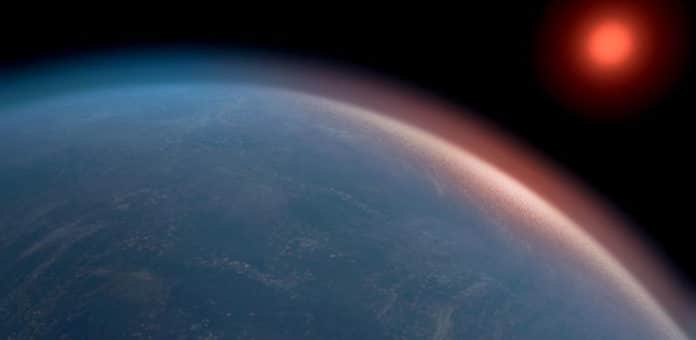Using the mass, radius, and atmospheric data of the exoplanet K2-18b, astronomers from the University of Cambridge, suggests that the exoplanet- more than twice the size of Earth- to be potentially habitable.
The exoplanet K2-18b, 124 light-years away, is 2.6 times the radius and 8.6 times the mass of Earth, and orbits its star within the habitable zone, where temperatures could allow liquid water to exist.
The team has demonstrated that despite the size of K2-18b, its hydrogen envelope isn’t excessively thick, and the water layer could have the right conditions to help life.
They used the existing observations of the atmosphere just as the mass and radius, to determine the composition and structure of both the atmosphere and interior using nitty-gritty numerical models and statistical models to clarify the information.
Scientists confirmed that the atmosphere to be hydrogen-rich with a significant amount of water vapor. They also found that levels of other chemicals such as methane and ammonia were lower than expected for such an atmosphere. Whether these levels can be attributed to biological processes remains to be seen.
Co-author Matthew Nixon, a Ph.D. student at the Institute of Astronomy, said, “We wanted to know the thickness of the hydrogen envelope – how deep the hydrogen goes. While this is a question with multiple solutions, we’ve shown that you don’t need much hydrogen to explain all the observations together.”
Scientists used the atmospheric properties as boundary conditions for models of the planetary interior. Doing so, they explored a wide range of models that could explain the atmospheric properties as well as the mass and radius of the planet. The data enabled them to acquire various possible conditions in the interior, including the extent of the hydrogen envelope and the temperatures and pressures in the water layer.
Scientists discovered that the maximum extent of the hydrogen envelope allowed by the data is around 6% of the planet’s mass, though most of the solutions require much less. The minimum amount of hydrogen is about one-millionth by weight, similar to the mass fraction of the Earth’s atmosphere. In particular, several scenarios allow for an ocean world, with liquid water below the atmosphere at pressures and temperatures similar to those found in Earth’s oceans.
This study opens the search for habitable conditions and bio-signatures outside the solar system to exoplanets that are significantly larger than Earth, beyond Earth-like exoplanets.
The study is published in The Astrophysical Journal Letters.
